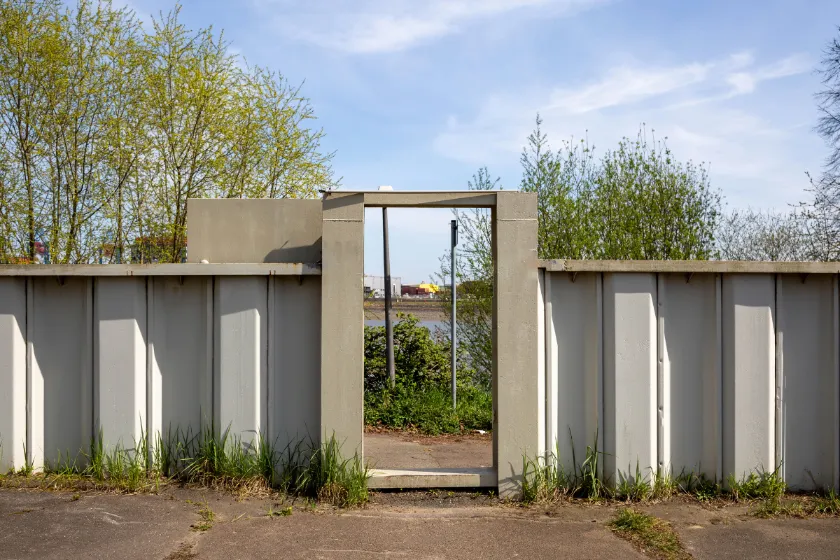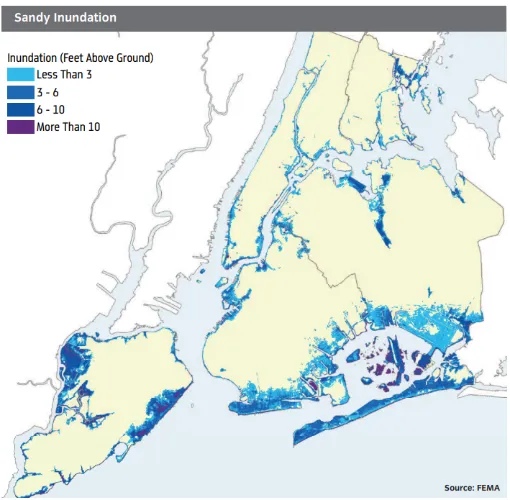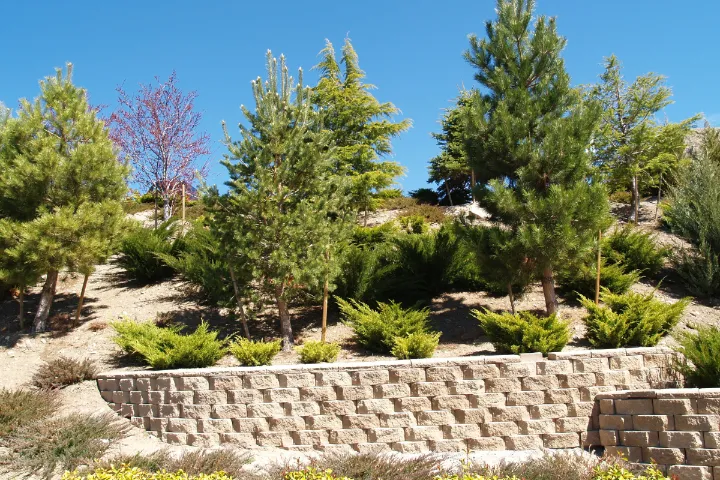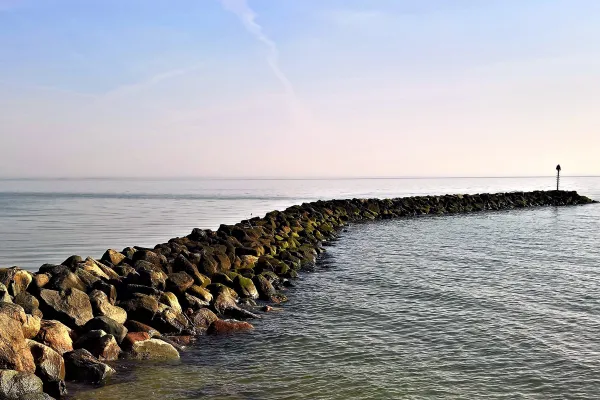Coastal Retaining Walls | Long Island’s Shoreline Experts
The New York coastline is no stranger to severe weather events, rising sea levels, and unpredictable storm surges. From Long Island’s barrier beaches to Brooklyn’s urban waterfronts and Queens’ residential shorelines, coastal communities are at constant risk of erosion and flooding. Coastal retaining walls serve as an essential defense, preventing land loss, reinforcing structures, and providing long-term shoreline stability.
At Piers and Piles, we design storm-resistant retaining walls built to withstand New York’s toughest coastal conditions. With expert engineering and durable materials, we provide lasting protection for homes, businesses, and infrastructure.
Keep reading to learn more about the types of coastal retaining walls, their uses, and why they’re essential for protecting your shoreline.
Secure Your Shoreline with The Best—Let’s Build Your Retaining Wall Today!

What Are Coastal Retaining Walls?
Coastal retaining walls protect shorelines, prevent erosion, prevent flooding, and reinforce waterfront properties. Built from concrete, steel, riprap, or geocell reinforcements, they absorb wave energy, stabilize soil, and shield against storm surges.
Coastal retaining walls are super important for Long Island, Brooklyn, and Queens, NY, property owners because they prevent land loss and foundation damage for residential, commercial, and industrial properties.
From seawalls to gabion walls, they are tailored to specific coastal conditions, safeguarding Long Island, Brooklyn, and Queens properties for long-term stability.
Benefits of Coastal Retaining Walls
Similar to other types of retaining walls, coastal retaining walls protect shorelines, prevent erosion, and reinforce waterfront properties. Built from concrete, steel, riprap, or geocell reinforcements, they absorb wave energy, stabilize soil, and shield against storm surges. These structures prevent land loss and foundation damage for residential, commercial, and industrial properties. From seawalls to gabion walls, they are tailored to specific coastal conditions, safeguarding Long Island, Brooklyn, and Queens properties for long-term stability.
Excellent for Erosion Control
Prevents soil loss from waves, currents, and storm surges.
Flood Protection
Blocks rising water and storm surges from damaging properties.
Structural Stability
Reinforces soil to prevent foundation failure.
Increased Property Value
Protects waterfront investments with long-term stability.
Get a Free Coastal Retaining Wall Estimate from Long Island's Shoreline Experts!
Protect your shoreline with a durable, storm-resistant retaining wall built to withstand Long Island’s toughest coastal conditions. Contact us today for a free estimate and expert guidance on the best solution for your property!
Coastal Retaining Walls and Storm Surge Barriers for Long Island, Brooklyn, and Queens
In 2012, Superstorm Sandy devastated New York, flooding over 100,000 homes on Long Island alone. Many properties were submerged under several feet of water, leading to unprecedented damage and loss. Neighborhoods like Red Hook in Brooklyn and the Rockaways in Queens were hit the hardest, experiencing severe flooding and destruction.
If your property was among those affected, investing in coastal retaining walls and storm surge barriers can provide much-needed protection against future storms, safeguarding your home and community. Our steel sheet pile walls offer a robust solution, designed to withstand extreme weather conditions and prevent the devastating impacts of storm surges.
Imagine your coastal property with a barrier around it on the next big storm; the water sitting outside the barrier, unable to enter and damage your property. That’s what our sheet pile walls can do!
Here’s some more info on them:

Benefits of Steel Sheet Pile Walls for Storm Surge and Flood Prevention in Long Island
In the aftermath of Superstorm Sandy, the need for robust coastal defenses has become paramount for Long Island, Brooklyn, and Queens. Our steel sheet pile walls offer an effective solution to protect your property from future storm surges and flooding.
To Learn More About How We Can Safeguard Your Property from the Next Big Storm, Click the Button Below and One of Our Experts Will Be In Touch!

Types of Coastal Retaining Walls
Coastal retaining walls come in a variety of designs, each suited to specific environmental conditions and property needs. Choosing the right type of wall depends on factors like soil composition, water levels, storm exposure, and the intended function of the structure.
Below, we’ll explore the most effective types of coastal retaining walls, highlighting their features, benefits, and real-world applications. Click on any of the toggles below to learn more about that type of coastal retaining wall!
Marine/Coastal Retaining Walls
Marine retaining walls protect coastal properties from erosion, wave action, and storm surges. Built from concrete, steel, or vinyl sheet piles, these walls absorb impact and prevent soil displacement. Ideal for marinas, waterfront properties, and flood-prone areas, marine retaining walls create a stable barrier between land and water.
Flood Prevention Barrier Walls
Flood prevention barrier walls act as shields against rising water levels and storm surges. These walls are typically constructed from reinforced concrete or steel sheet piles, providing a rigid defense against coastal flooding. Designed to channel water away from properties, flood barrier walls help minimize erosion and property damage.
Storm Surge Walls
Storm surge walls are engineered to block powerful ocean surges during hurricanes and extreme weather events. Made from reinforced concrete or steel, they stand several feet above ground level to deflect incoming waves and reduce flood risks. These walls are crucial for coastal homes and commercial properties in storm-prone areas.
Bermed Retaining Walls
Bermed retaining walls use sloped earth embankments reinforced with concrete or geotextiles. They help dissipate wave energy, preventing direct impact on coastal properties. Often integrated with vegetation, these walls blend into natural landscapes while providing erosion control and shoreline protection.
Soldier Pile Retaining Walls
Soldier pile walls consist of vertical steel beams with horizontal lagging, offering structural support against shifting coastal soils. These walls are commonly used in waterfront construction projects to stabilize deep excavation sites or retain soil along harborfronts and marinas.
Steel Sheet Pile Retaining Walls
Steel sheet pile retaining walls are durable, corrosion-resistant barriers ideal for marine applications. Often used in commercial waterfronts, they provide high-strength protection against water intrusion and soil movement. Steel sheet piles interlock to form a watertight structure, reinforcing shorelines and docks.
Cofferdam Walls
Cofferdam walls are temporary enclosures built to keep water out of construction areas. Made from interlocking steel or concrete, these structures allow for dry excavation in submerged sites. Commonly used for bridge, pier, and seawall construction, cofferdams create a secure environment for marine engineering projects.
Vinyl Sheet Piles
Vinyl sheet piles offer a lightweight, corrosion-resistant alternative to steel and concrete retaining walls. These flexible walls are ideal for residential waterfronts, providing erosion control without the risk of rust or degradation from saltwater exposure.
Gabion Walls
Gabion retaining walls consist of stacked wire mesh cages filled with stone, creating a flexible yet sturdy erosion control structure. These walls absorb wave energy, allowing water to pass through while stabilizing shorelines. Gabions are eco-friendly and blend naturally with coastal landscapes.
Living Walls (Green Walls)
Living walls, or green walls, integrate vegetation into retaining wall structures, reducing erosion while enhancing biodiversity. These walls use a combination of soil, plants, and geotextiles to create a natural buffer against coastal forces. Ideal for eco-conscious property owners looking for sustainable shoreline protection.
Geocell Retaining Walls
Geocell retaining walls use a honeycomb-like structure made from high-strength geosynthetics to reinforce sandy or unstable coastal soils. Filled with gravel or concrete, these walls provide excellent erosion control while allowing natural water drainage.
Cement-Bound Sandbag Walls
Cement-bound sandbag walls offer a fast and durable solution for flood protection. These walls are created by stacking cement-filled sandbags in a structured pattern, providing temporary or semi-permanent defense against coastal erosion and storm surges.
Riprap Retaining Walls
Riprap retaining walls consist of large, interlocking stones placed along shorelines to prevent soil erosion. These walls act as natural wave breakers, dissipating energy and stabilizing the coastline. Riprap walls are commonly used in high-energy coastal environments to protect against water impact.
Other Coastal Stabilization Structures
Coastal stabilization structures play a crucial role in protecting waterfront properties from erosion, flooding, and storm surges. While steel sheet pile walls provide unmatched durability and flood resistance, other solutions like seawalls, breakwaters, and revetments help strengthen shorelines and safeguard infrastructure. Each structure is designed to combat different coastal challenges, ensuring long-term resilience for homes, businesses, and public spaces.
From living shorelines that enhance natural ecosystems to riprap and gabion walls that absorb wave energy, there are multiple options to fortify coastal properties. Choosing the right solution depends on shoreline conditions, storm exposure, and property needs.
Click the toggles below to explore different coastal stabilization structures and their benefits.

Seawalls
Seawalls are sturdy structures built parallel to the shoreline to protect coastal areas from erosion and flooding. They act as barriers against wave action, safeguarding properties and infrastructure. Seawalls help maintain the integrity of the coastline, reducing land loss and providing long-term protection for waterfront communities.
Breakwaters
Breakwaters are offshore structures designed to absorb and deflect wave energy before it reaches the shore. By creating calm waters near the coastline, they reduce erosion and protect harbors and beaches. Breakwaters also promote sediment deposition, aiding in beach nourishment and stabilization.
Groins
Groins are structures built perpendicular to the shoreline to trap sand moved by longshore currents. They help build up the beach, providing a buffer against wave action and reducing erosion. Groins are effective in maintaining beach width and protecting coastal properties.
Revetments
Revetments are sloped structures placed on banks or cliffs made from materials like rocks or concrete. They absorb wave energy, preventing erosion and stabilizing the shoreline. Revetments are cost-effective solutions that protect against coastal erosion while preserving the natural slope of the land.
Living Shorelines
Living shorelines use natural elements like vegetation, sand, and oyster reefs to stabilize the coast. They reduce erosion while enhancing habitats and improving water quality. Living shorelines provide a sustainable and eco-friendly approach to coastal protection, promoting biodiversity and resilience.
Geotextile Tubes
Geotextile tubes are large, sand-filled fabric tubes placed along the shoreline to act as barriers against waves and prevent erosion. They are flexible and can be adapted to various coastal conditions. Geotextile tubes provide an effective and temporary solution for shoreline stabilization.
Oyster Reefs
Oyster reefs are natural barriers formed by oyster colonies that absorb wave energy and reduce erosion. They enhance water quality by filtering pollutants and provide habitats for marine life. Oyster reefs offer a sustainable approach to coastal protection, promoting ecological balance and shoreline stability.
Artificial Reefs
Artificial reefs are man-made structures placed underwater to mimic natural reefs, absorbing wave energy and reducing coastal erosion. They provide habitats for marine organisms and enhance biodiversity. Artificial reefs contribute to shoreline protection while supporting marine ecosystems.
Don’t wait for the next storm to take action. Contact us now to schedule a free consultation and learn how our steel sheet pile walls and other coastal stabilization solutions can protect your property and provide peace of mind.
Your Go-To Team for Strom Surge Protection and Coastal Retaining Walls
Protecting New York’s shoreline requires expert solutions that can withstand storm surges, rising tides, and erosion. At Piers and Piles, we build high-performance coastal retaining walls designed for Long Island, Brooklyn, and Queens.
What Sets Us Apart?
Proven Storm Protection
Engineered to withstand hurricanes, Nor’easters, and rising sea levels.
Custom Solutions for Each Project
Our proactive solutions are designed to fit your shoreline’s unique conditions.
Heavy-Duty Materials
Built with marine-grade concrete, steel, and erosion-resistant reinforcements.
Industry-Leading Warranties
Providing peace of mind with reliable, long-lasting performance.
Final Thoughts: Protecting Your Coastal Property for the Long Term
Investing in a well-engineered coastal retaining wall is more than just reinforcing your shoreline—it’s about securing the long-term stability of your property. From erosion control to flood protection, the right retaining wall system prevents costly damage and ensures that commercial and residential waterfronts remain intact despite New York’s unpredictable coastal conditions.
At Piers and Piles, we bring expertise in constructing storm-resistant coastal retaining walls that withstand the harshest marine environments. Call on us for a free assessment today and meet your new partners in top-quality retaining walls backed by industry-leading warranties.
Protect Your Coastal Property with Expert Retaining Wall Installation—Contact Us Today!